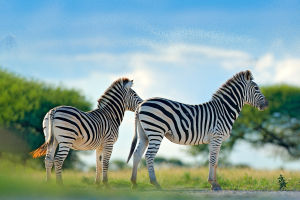The extinction level of the giant panda species has been reduced from endangered to vulnerable. Many people are concerned: Will the protection of giant pandas also be downgraded?
"The decline in the threat level of giant pandas reflects the efforts and achievements of giant panda protection work, and also reflects the recognition of giant panda protection by the international community.
The protection level of giant pandas will not be lowered, and the protection intensity will not be lowered, but will be weakened. National key protected wild animals".
So don't worry, because it is certain that everyone's love for giant pandas will only go up and down.
Why is the giant panda, a chubby and furry animal that only seems to be cute, so popular and can be placed on the throne of "national treasure"?
Are pandas the least?And there are currently 1,864 wild giant pandas and 633 captive giant pandas, which is not the least.
Is it the most beautiful? There are no identical leaves in the world. Everyone has different definitions of beauty because of different preferences and cultures. Some like peacocks with open screens, some like mighty lions, some like cobras, and some even like spiders. There is no standard for evaluating giant pandas as the most beautiful.
Is it the most useful? Apart from being cute, giant pandas have no use value. Its bear bile and bones have no medicinal value, bear paws and meat have no edible value, and its fur cannot be used for clothing.
National treasures are national treasures. Every country in the world has its own national treasures. Most of them are priceless treasures and become the pride and symbol of the country.
In order to become a national treasure, in addition to its economic value, it should generally have one or more of the following characteristics: first, it is unique or mostly owned by the country; second, it can reflect the cultural characteristics of the country; third, it can represent the image of the country; fourth, it is closely related to the development of the country .
The giant panda is different, its naive appearance and docile personality, and its advantages that transcend the boundaries of race, culture, country and ideology, are deeply loved by people all over the world.
According to scientists' research on giant panda fossils, giant pandas have historically been active throughout China and even beyond the border, as far south as Vietnam and Myanmar.
The vast range of prehistoric activities of the giant panda makes it have the identity beyond the local characteristic animal, and has the conditions to become a national treasure.
Giant pandas are juveniles before the age of 5, mature and mature from 5 to 18 years old, and old age when they are over 18 years old. Giant pandas living in the wild, if there are no accidents, can usually live to their 20s, but rarely exceed 30 years old; under the conditions of captivity, giant pandas have a record of 38 years old.
On December 8, 2020, the giant panda "Xin Xing" died at the age of 38 (equivalent to a human life expectancy of at least 110 years).
Among the giant pandas in captivity, less than 30 can live beyond the age of 30. (Wild giant pandas have an even shorter lifespan, only 14 to 20 years.) Nova broke that record.
The breeder who has looked after her for 28 years once said in an interview, "When she was young, she ate faster and more than other pandas." The zoo said that as Xinxing grew older and tempered, Her attachment to the breeder grew stronger.
In her final years, Zhang Naicheng moved to a house less than 20 meters from her fence to watch her at night. To protect her aging teeth, he split the bamboo and fed her the hulled stems and young leaves. "She is like my family," the breeder told the local news outlet, adding, "I will take care of her for the rest of her life."


